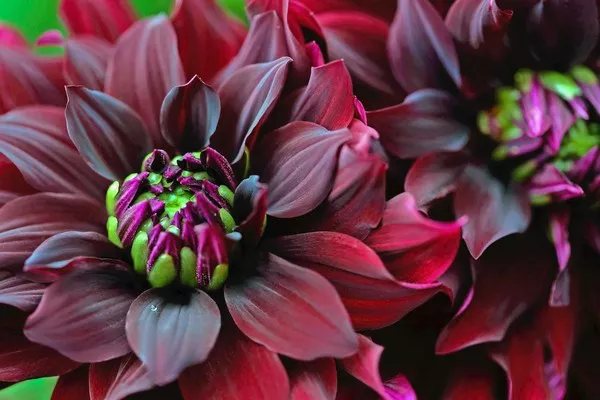Geraniums, with their vibrant colors and delightful aroma, are a beloved addition to gardens and landscapes. However, achieving a profusion of blooms on your geranium plants requires more than just planting them and hoping for the best. Whether you’re a seasoned gardener or a novice enthusiast, understanding the intricacies of geranium care is essential to coaxing these plants into a spectacular display of flowers. In this article, we’ll delve into the art of cultivating blooming geraniums, covering ranging from proper planting and nurturing to pruning techniques and troubleshooting.
1. Selecting the Right Geranium Varieties
The journey to abundant geranium blooms begins with selecting the right varieties for your location and preferences. Geraniums are available in a wide range of species and cultivars, each with its own unique growth habits, flower colors, and requirements. Common types include zonal geraniums, ivy geraniums, and regal geraniums. Consider factors such as climate, sunlight availability, and intended use (beds, containers, hanging baskets) when choosing the right geraniums for your garden.
2. Providing Optimal Sunlight
Geraniums are sun-loving plants that thrive in bright sunlight. To encourage flowering, ensure that your geraniums receive at least 6 to 8 hours of direct sunlight each day. Placing them in a location with morning sun and some afternoon shade can be ideal, as it prevents them from being exposed to intense midday heat.
3. Choosing Well-Draining Soil
Proper soil preparation is crucial for geraniums to flourish. These plants prefer well-draining soil that prevents waterlogging. Amend heavy or compacted soil with organic matter, such as compost, to improve drainage and provide essential nutrients. The ideal pH range for geraniums is between 6.0 and 7.5.
4. Fertilizing for Flowering
Geraniums are relatively heavy feeders, requiring regular doses of nutrients to support vigorous growth and flowering. Choose a balanced, water-soluble fertilizer with a ratio of 10-10-10 or 20-20-20, and apply it every 4-6 weeks during the growing season. Avoid over-fertilization, as excessive nitrogen can lead to lush foliage at the expense of flowers.
5. Proper Watering Practices
Finding the right balance in watering is crucial for geraniums. They prefer to be kept moderately moist but not soggy. Water the plants thoroughly when the top inch of soil feels dry to the touch. To prevent disease, water at the base of the plant and avoid wetting the leaves. Using a layer of mulch can help retain moisture and regulate soil temperature.
6. Deadheading and Pruning
Deadheading—removing spent flowers—is a vital practice for encouraging continuous blooms on geraniums. Regular deadheading prevents the plant from diverting energy into producing seeds and encourages it to produce more flowers. Additionally, occasional pruning can help shape the plant, improve air circulation, and stimulate new growth. Prune back leggy or woody stems, cutting just above a leaf node.
7. Pinching for Bushier Growth
To promote bushier growth and more flower-bearing stems, consider pinching your geraniums. This involves using your fingers or pruning shears to snip off the tips of young shoots. Pinch just above a leaf node to encourage lateral branching. This technique should be employed during the early stages of growth.
8. Overwintering Geraniums
In colder climates, geraniums can be overwintered indoors to ensure their survival for the next growing season. Before the first frost, dig up your geraniums, shake off excess soil, and trim back their foliage. Store them in a cool, dark place with good ventilation. Water sparingly throughout the winter to prevent the plants from drying out.
9. Addressing Common Issues
Geraniums, like any plant, can face challenges that impact their flowering. Keep an eye out for pests such as aphids, whiteflies, and spider mites. Regularly inspect the undersides of leaves for signs of infestation. Additionally, be cautious of diseases like powdery mildew and botrytis, which can hinder flowering. Proper spacing, good air circulation, and practicing good hygiene in your garden can help prevent these issues.
10. Patience and Consistency
Achieving a profusion of geranium blooms requires patience and consistent care. It’s important to maintain a routine of watering, fertilizing, and pruning. Don’t be discouraged if your geraniums take some time to establish themselves and start flowering abundantly. With dedication and attention to detail, the rewards of a colorful and vibrant geranium display will undoubtedly be worth the effort.
Conclusion
Cultivating blooming geraniums is a rewarding endeavor that requires a blend of horticultural knowledge and attentive care. From selecting the right varieties to providing optimal sunlight, water, and nutrients, each step plays a pivotal role in encouraging your geraniums to burst into a stunning array of flowers. Regular maintenance, including deadheading, pruning, and pinching, contributes to the overall health and vibrancy of the plants. By embracing these practices and troubleshooting challenges along the way, you’ll be well on your way to enjoying the captivating beauty of flourishing geranium blooms in your garden or outdoor space.


